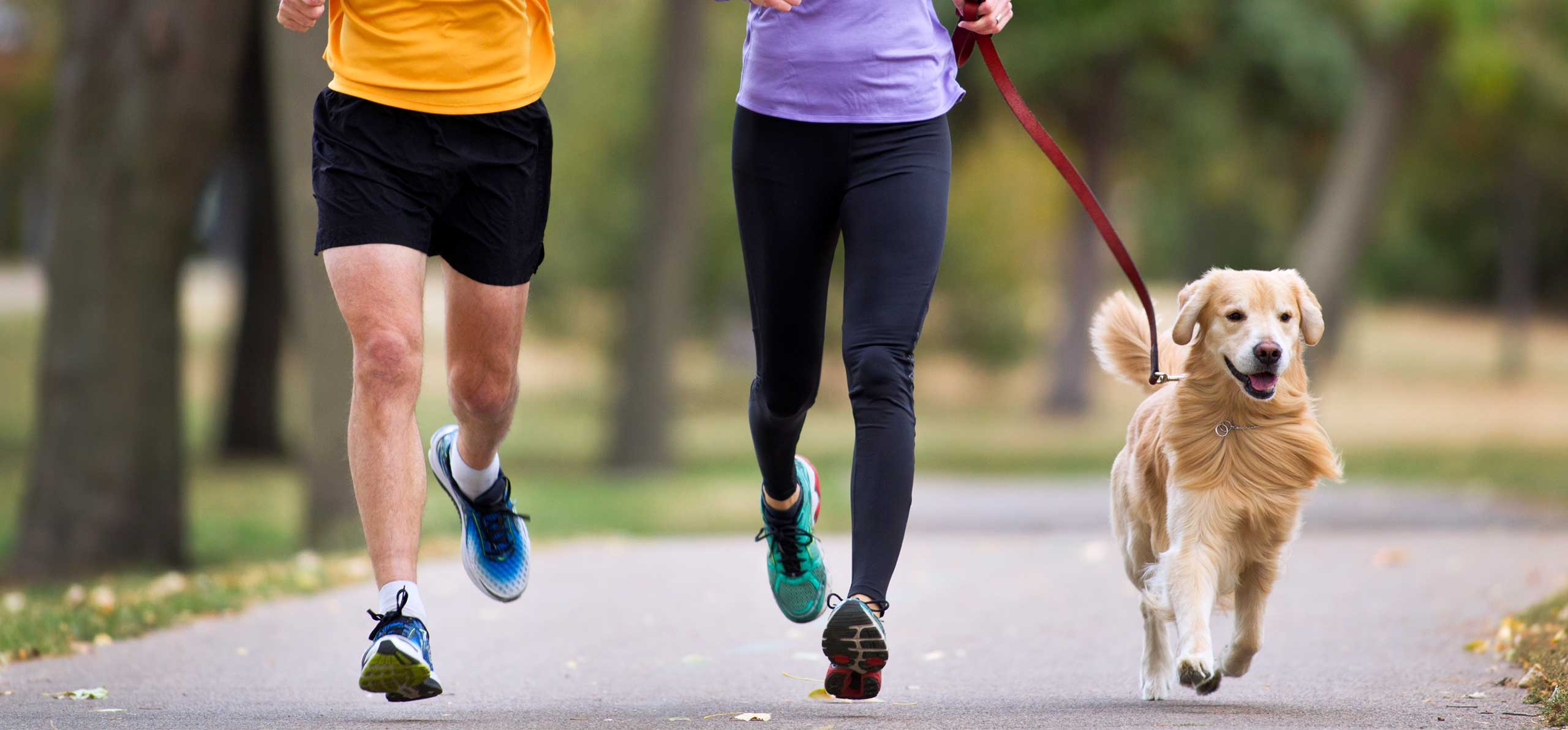While there may be a laundry list of benefits that come from running, has anyone considered whether or not it’s good for your dog? We like to think we have a lot in common with our furry four-legged friends but there are countless differences.
Nothing can motivate you quite like those puppy dog eyes watching expectantly as you lace up your running shoes. It’s easy to talk yourself out of a workout, but not when your pooch is egging you on.
Plus, running together can be a great bonding experience and an easy way to get both of your workouts in at once. Keep in mind, however, dogs are driven to please their humans; they’ll stay by your side loyally even if they don't enjoy jogging laps around the park.
Walk, don’t run
Just like humans, some dogs simply don't do running. While romping ‘round the park may be enjoyable for them, running or jogging at a steady pace may not be. Some dogs are too big, too small or just not built for it. Most importantly, check with your veterinarian to see if your dog is healthy enough to run.
If so, you many want to ease into a routine that builds stamina by increasing the length of your walks together. Intermix a short course of running with walking in between for recovery. This gradual process will help both of you build up to a healthy pattern that can be maintained.
Running wild
Besides health and age, it’s also important to consider your dog’s breed or predominate breed.
Also, the best running partner for you depends on what type of runner you are. If you’re a long-distance runner, you’ll want a different partner than a sprinter, which would entail running short distances at a fast pace.
The climate in which you run can even affect the type of dog that’s best suited for your running style. If you like to get out and move when there’s snow on the ground, you may want to bring a hardy German Shepherd or Husky along.
Dogs with long noses and short coats are better suited for warm temperatures, although running in heat over 80 degrees isn't recommended for any dog.
Most vets do not recommend running with puppies. While your little one's bones are still developing, the impact of running could lead to injury. It’s typically best to wait until your pup is between 1 and 2 years old before the growth plates have fully fused and he’s able to run safely. Always ask your vet for the best time to begin running with your best pal.
Some dogs are born to run, like:
- Viszlas
- Weimaraners
- German shorthaired pointers
- Australian cattle dog
- Labradors
- Pit bulls
- Airedale Terriers
- Greyhounds and Whippets (for short sprints and jogs)
Hitting the wall
Breeds with those adorably squished faces, such as bulldogs and pugs, are not built for running. While they may run around during playtime, a continuous run isn’t ideal. The brachycephalic build that gives them that cute, flat face, inhibits clear airflow, which could be dangerous while running.
Older dogs may also have a difficult time running if they’re stiff or tired. It’s important to understand your dog's body language and to notice when it’s time to walk instead of run.
Your four-legged partner can't verbally tell you when he gets those awful stomach cramps from running, so make sure you pay attention to his body language. If he lags behind, take a break in the shade, walk or slow down to a pace that he sets.
There really isn't a whole lot that isn't made better by having your dog by your side, and pumping yourself up for a workout is no different.
If your dog’s in good health and enjoys running with you, keep up this healthy habit — just be sure you stay safe and injury free.

